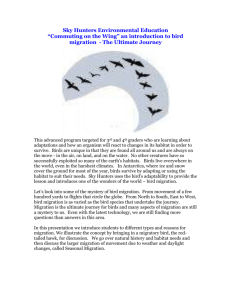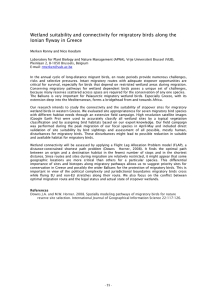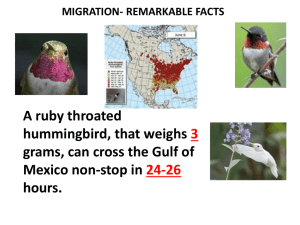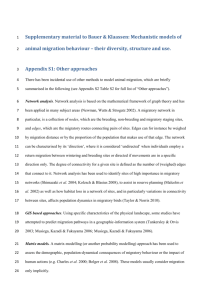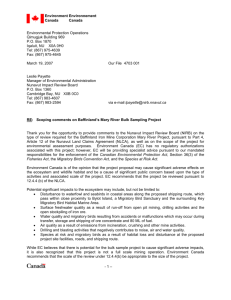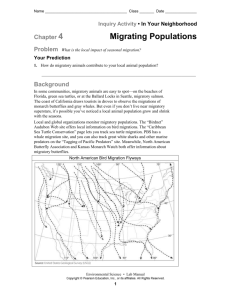The Evolution of Migration Ancestral songbirds headed south for the
advertisement
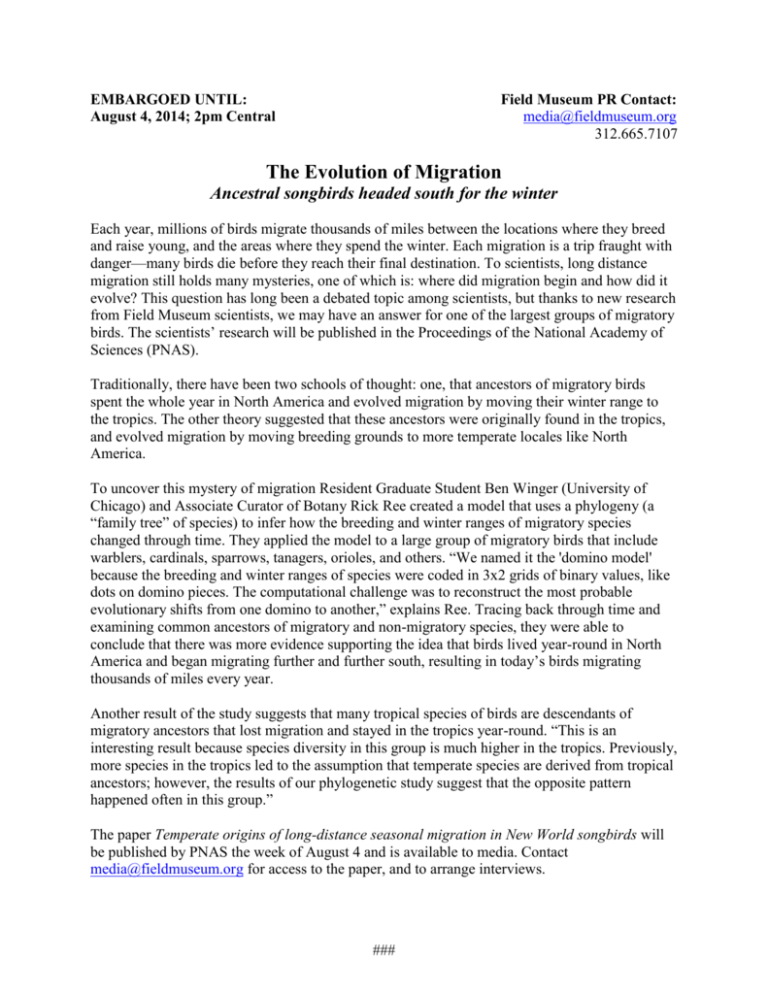
EMBARGOED UNTIL: August 4, 2014; 2pm Central Field Museum PR Contact: media@fieldmuseum.org 312.665.7107 The Evolution of Migration Ancestral songbirds headed south for the winter Each year, millions of birds migrate thousands of miles between the locations where they breed and raise young, and the areas where they spend the winter. Each migration is a trip fraught with danger—many birds die before they reach their final destination. To scientists, long distance migration still holds many mysteries, one of which is: where did migration begin and how did it evolve? This question has long been a debated topic among scientists, but thanks to new research from Field Museum scientists, we may have an answer for one of the largest groups of migratory birds. The scientists’ research will be published in the Proceedings of the National Academy of Sciences (PNAS). Traditionally, there have been two schools of thought: one, that ancestors of migratory birds spent the whole year in North America and evolved migration by moving their winter range to the tropics. The other theory suggested that these ancestors were originally found in the tropics, and evolved migration by moving breeding grounds to more temperate locales like North America. To uncover this mystery of migration Resident Graduate Student Ben Winger (University of Chicago) and Associate Curator of Botany Rick Ree created a model that uses a phylogeny (a “family tree” of species) to infer how the breeding and winter ranges of migratory species changed through time. They applied the model to a large group of migratory birds that include warblers, cardinals, sparrows, tanagers, orioles, and others. “We named it the 'domino model' because the breeding and winter ranges of species were coded in 3x2 grids of binary values, like dots on domino pieces. The computational challenge was to reconstruct the most probable evolutionary shifts from one domino to another,” explains Ree. Tracing back through time and examining common ancestors of migratory and non-migratory species, they were able to conclude that there was more evidence supporting the idea that birds lived year-round in North America and began migrating further and further south, resulting in today’s birds migrating thousands of miles every year. Another result of the study suggests that many tropical species of birds are descendants of migratory ancestors that lost migration and stayed in the tropics year-round. “This is an interesting result because species diversity in this group is much higher in the tropics. Previously, more species in the tropics led to the assumption that temperate species are derived from tropical ancestors; however, the results of our phylogenetic study suggest that the opposite pattern happened often in this group.” The paper Temperate origins of long-distance seasonal migration in New World songbirds will be published by PNAS the week of August 4 and is available to media. Contact media@fieldmuseum.org for access to the paper, and to arrange interviews. ###


